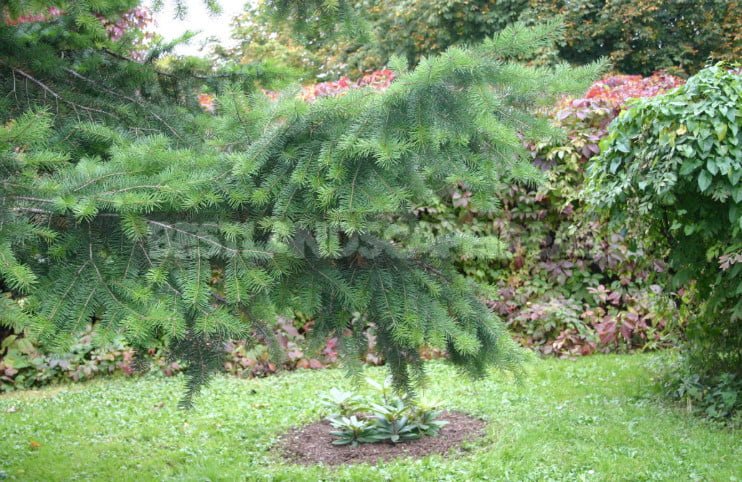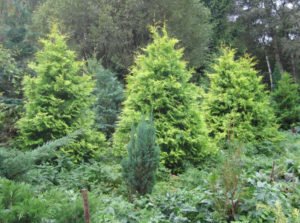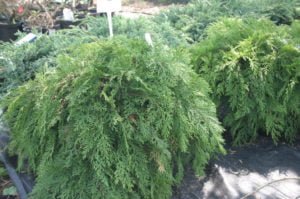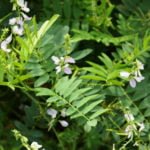Douglas fir is a rather dissonant name, sometimes they say “Pseudotsuga”. In 1791, it was discovered by Archibald Menzies, who served as a surgeon on Captain Vancouver’s ship, and was rediscovered by English botanist and traveler David Douglas in 1827.
In the botanical literature, pseudotsuga was described in 1838 under the name Abies douglasii. According to the structure of needles, bark and crown shape, Douglas fir is really similar to fir, but there are a number of differences. The bumps hanging down look completely different. On their integumentary scales there is a characteristic protruding process resembling a swallow’s tail. The buds are fusiform, devoid of resin. There are resin passages in the wood.
In 1855, in the “Treatise on Conifers” by E. Quarry, these plants were assigned to the genus tsuga and only with a more thorough study in 1867 were separated into a separate genus. Until 1895, Douglas fir was considered a purely American plant, but then Japanese and European botanists described 6 species of this genus found in China and Japan. Currently, there are from 7 to 18 species native to North America and East Asia.
Most species of the genus are majestic trees up to 100 m (328 ft) tall with trunks up to 2 m (6.5 ft) in diameter. The average height of trees is usually 25-50 meters (82-164 ft). The crown is thin, evenly conical. Branches, such as spruce and fir, have a curl arrangement of tiers. The bark on young trees is quite smooth, with numerous resin bubbles, on old trees it is roughly cracked and furrowed. The needles of the North American fir are solid in the upper part, and those of the East Asian fir are notched.

In the middle lane, two types are promising –The pseudo-rainbow of menciesii is very popular in the United States. This North American tree is found in the wild from California to British Columbia, forms a huge forest on the Pacific coast. In the late 19th and early 20th centuries, these forests were ruthlessly exploited, and although they are still one of the most important sources of wood in the United States and Canada, timber harvesting is currently regulated. The tallest (felled) specimen reached a height of 133 m (436 ft), and the diameter of the trunk at the base is 4 m (13 ft).
Pseudotsuga was introduced to Europe already in 1828 and, due to its rapid growth and high quality of wood, is now widely bred in forests in the West and in the center of Europe. The culture is cold-resistant, tolerates urban conditions well (smoke- and gas-resistant), tolerates strong pruning well. More demanding of light and soil than spruce and fir. The best development is achieved on fresh, loose, high-humus loam.
In culture lives 100-150 years, in nature – up to 1000 years. Intensive growth has been observed since the age of 10-15. Propagated by seeds and vegetative cuttings with the use of stimulants.
It has a number of decorative forms, of which the most interesting is the color of needles or the form of growth: f. aurea, f. albospica’ ‘Fletcheri’. There is a natural form f. viridis. This is a typical coastal form adapted to a longer growing season in areas with a coastal climate and light frosts, more shade-tolerant.
P. glauca was more frost-resistant and adapted to urban conditions. It grows in the Rocky Mountains of North America at an altitude of more than 200 m (656 ft), is smaller and grows slower, has scaly bark, gray-green needles and backward-curved covering scales.
P. macrocarpa grows in southern California, it is a thermophilic breed with a height of 12-16 m (39-52 ft).
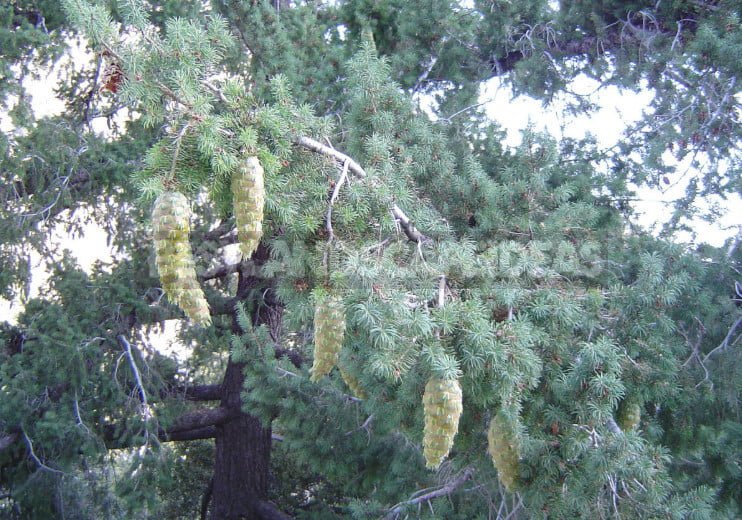
East Asian species of pseudotsuga do not form large forests and have no industrial significance in the countries of their natural growth. These species are no less decorative than North American ones, but they are cultivated extremely rarely. P. sinensis is a tall tree growing in Western China on calcareous soils. P. wilsoniana is a tree 20-25 m (65.6-82 ft) tall, grows in the southwestern part of China, in the Mekong Valley. It was discovered in 1919 and is present in the collections of France and England.
